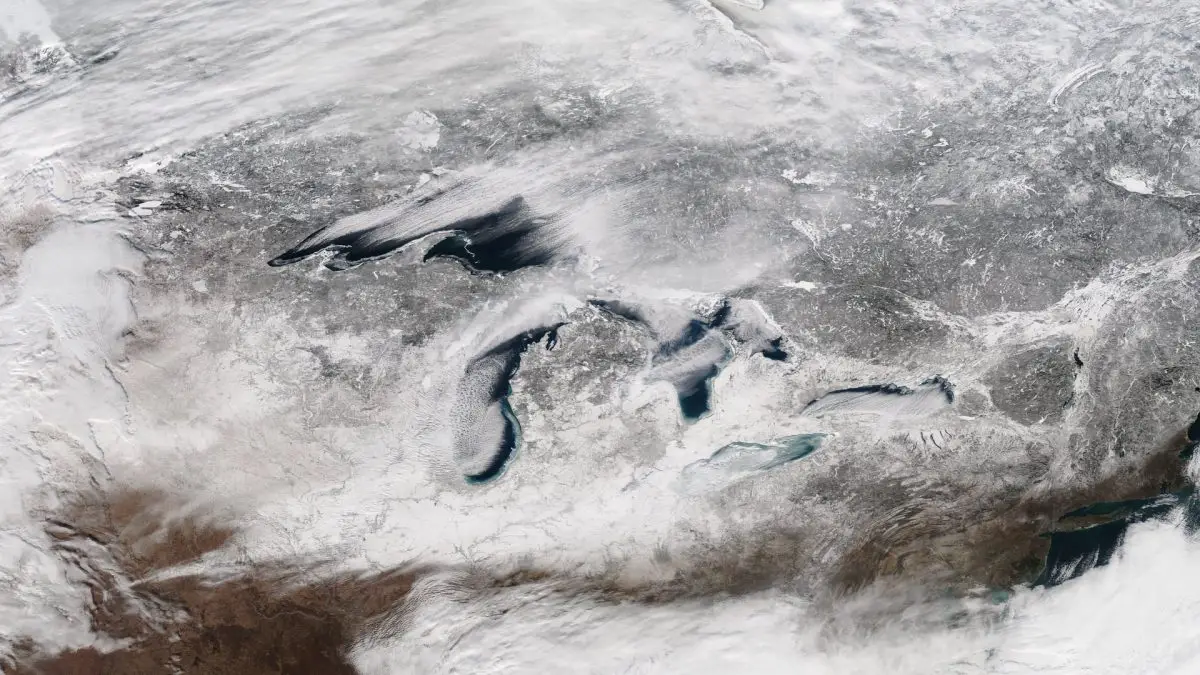Will high Great Lakes ice coverage rates across the region translate into high water levels during the following summer? In a recent, “unofficial” outlook of the Great Lakes water levels, the Army Corps of Engineers – Detroit District forecasts that the Great Lakes water levels may continue to be above their long-term average for the following year should weather and ice cover conditions be similar to this past winter. Think “Polar Vortex”
Winter Great Lakes Ice Cover Impacts Lake Levels
The Corps created a forecast where the ice coverage was at or near what was observed during the winter of 2021-2022. In the graph below, the purple plume represents nine years when the maximum Great Lakes total ice cover was about 56 percent. The top ice cover for the Great Lakes during the winter of 2021-2022 was 56%, somewhat higher than the long-term average.
This experimental forecast also includes data from hydroclimate conditions 2007-08 and 2008-09. The gray shaded area on the plot represents the full range of possible outcomes using historical sequences of NBS from 1900 through 2021. Net Basin Supply is the sum of precipitation over the lake, evaporation from the lake, and runoff to the lake (NBS).
Long Term Lake Level Forcast for Michigan-Huron
If this scenario holds, the lakes will rebound and not slide into another historic low period as we experienced ten years ago, in 2012-2013. It should be noted that this forecast assumes we will continue to have cold winters in years ahead, and lake temperature will remain within historical norms.
Canada Has a Contrarian View of Great Lakes Water Levels
A report in May from the Canadian newspaper, the Manitoulin Expositor, outlined a new water-level analysis that predicts a historic decline in lake Michigan-Huron water levels by 2030, extending roughly 3.5 feet below the record low. Conversely, by 2040, levels might be one foot higher than the 1986 record high.
A troubling part of the study’s forecast was that Lake Michigan-Huron is expected to decrease to 174.5 by 2030, only eight years away. This would make it 3.5 feet lower than the lows measured between 2000 and 2014. Such a drop may render some coastal ports and marinas inoperable, and it may be possible to walk to numerous islands on Lake Huron’s Georgian Bay and North Channel.
Final Thoughts on Great Lakes Ice Coverage and Water Levels
These forecasts always are a big “if.” We have had wild swings in the Great Lakes with record high-temperature summers and cold “polar vortex” fueled winters. This whipsaw effect causes havoc on forecasts. However, the truth likely lies somewhere within the data presented in these forecasts. It will be interesting to see if the United States’ studies agree with Canada.
The US Army Corps of Engineers (USACE), the National Oceanic and Atmospheric Administration (NOAA), and the United States Geological Survey (USGS), are now working on a comparative evaluation of all the Great Lakes, including Lake Michigan-Huron water levels. Their report is expected to be finished in 2023/2024.
